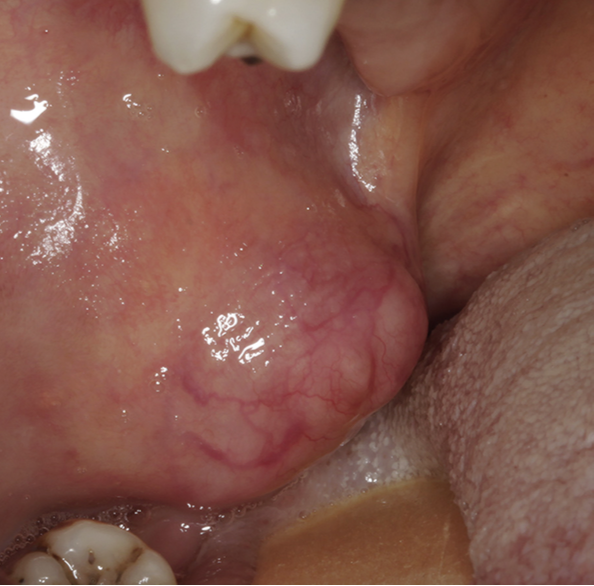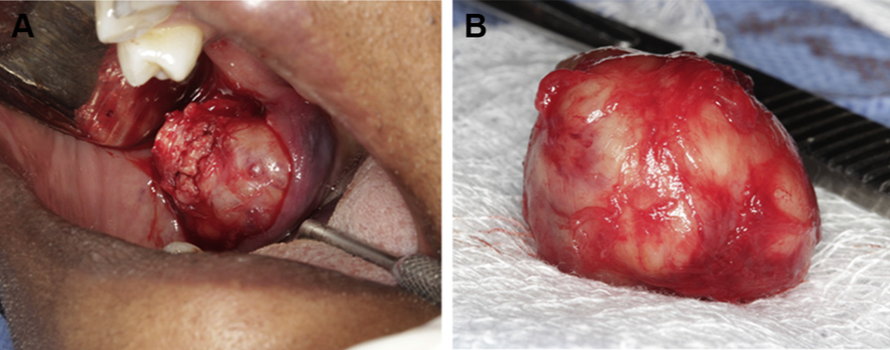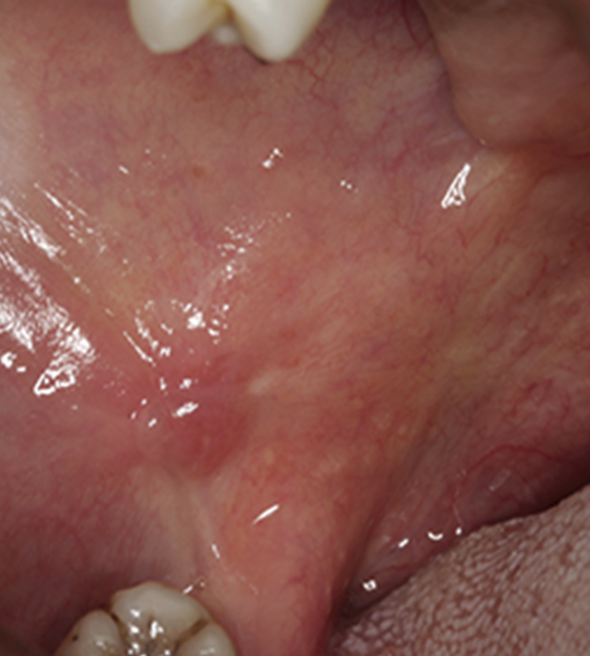Case Presentation
A 65-year-old woman presents to the clinic for periodontal treatment and during the routine intraoral exam, a firm nodule is noticed in the right buccal mucosa.
- The nodule is well circumscribed in the posterior right buccal region, measuring 2.5 cm in diameter.
- The mucosa overlying the nodule appears normal.
- Patient is unaware of the nodule; therefore a history of the nodule could not be determined.
- Extra-oral examination is within normal limits.
- The patient’s medical history shows no significant findings that can contribute to a diagnosis.

Treatment
Complete excisional biopsy of the nodule is performed. The nodule is removed and shows no attachment to any surrounding structures. The nodule shows a smooth surface with no internal cavity. The patient is kept on close follow up for one year, at which time no complications or recurrence was seen.
Histopathology
- Proliferation of the basaloid epithelial cells.
- Duct-like formations filled with an amorphous basophilic substance.
- The lesion is encapsulated in a thin fibrous capsule with areas of tumor infiltration.
- The lesion shows to be from epithelial origin because of the expression of cytokeratin and myoepithelial cells.

Diagnosis: Basal Cell Adenoma
Basal cell adenoma is a benign salivary neoplasm. It is most often associated with the parotid gland and very rarely with minor salivary glands (2% of the time). This neoplasm is most often found in elderly patients around 70 years old.
Complete excision is indicated with basal cell adenomas, rather than enucleation. Care should be taken not disrupt the overlying capsule of the lesion, to minimize the chances of recurrence, which is rare (3.8%). Membranous basal cell adenomas have a higher rate of recurrence (25%) and have a higher chance of malignancy. Therefore close follow up appointments should be held.

This case was completed and presented by Natalia Batista Daroit and colleagues at the Federal University of Rio Grande do Sul (Porto Alegre, Brazil).


